I don’t remember when I learned that Canada had a pair of French Islands off the Newfoundland coast, but I do know that since that time I have always wanted to visit. Fast forward to June 2024. I tacked on a three-day trip to St. Pierre (not enough time to do Miquelon too) before a media conference in St. John’s, as the island is only a 40-minute flight away. With the help of a local, I experienced many of the top things to do in St. Pierre, especially from the perspective of an outdoor enthusiast.
I don’t think you need more than three days on St. Pierre – but I would have enjoyed a day or two on Miquelon, the nature island. The logistics of combining the two are more difficult than I had appreciated.

Getting to St. Pierre (and Miquelon)
Flying to St. Pierre
John and I chose to fly to St. Pierre as it was time-efficient, and in the long run less expensive than renting a car in St. John’s, driving 360 km to Fortune, and then taking a 1.5-hour ferry that runs at most twice a day on a weekend, and not everyday. Planning is required.
Air Saint Pierre flies between St. John’s, Montreal, Halifax, Miquelon, Iles de la Madeleine, and Paris in the summer.
Ferries to St. Pierre and Miquelon
If you’ve got a car and you’re keen to visit both islands, the ferry is the way to go. You can reserve the St. Pierre and Miquelon ferries online. Ferries go to both islands from Fortune on Newfoundland’s Burrin Peninsula and between islands too.
The ferry terminal in St. Pierre is in town, so on arrival you will be able to walk everywhere.


Location
The islands of St. Pierre and Miquelon are located at the entrance to the Gulf of St. Lawrence, just 25 km off the coast of Newfoundland. On clear days you can see Newfoundland.
Today, approximately 6,000 people live permanently on St. Pierre while another 600 live on Miquelon.
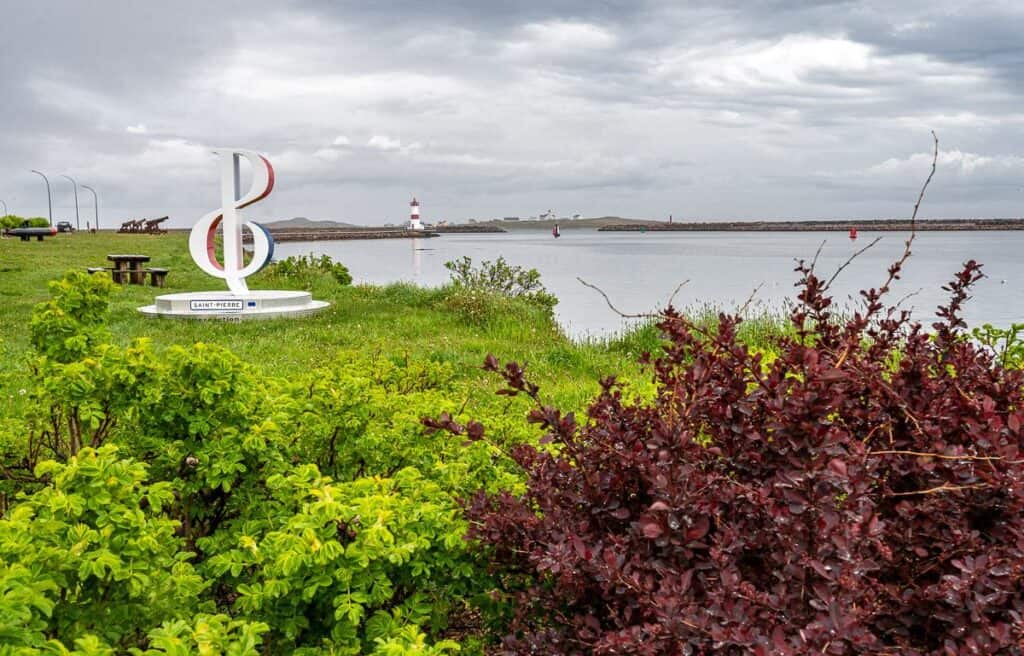

A bit of history
The history of St. Pierre and Miquelon dates to 3,000 BC when Native Americans and Paleo-Eskimo people inhabited the islands. In the 15th century, European fisherman started showing up and by the early 1600’s, the islands became a base for cod fishing used by the Normans and Bretons. In 1530 nautical charts show the islands as being called Saint-Pierre.
Over the years St. Pierre has been governed by both the British and French. Today St. Pierre and Miquelon are officially a self-governing territorial overseas collective of France – which is a long way of saying that France sends a lot of money here, even though they are not officially part of France.
Good to know
Life on St. Pierre runs on a different schedule than it does in Newfoundland. This is France (well sort of) after all where they take their lunch breaks seriously. Many businesses are closed between noon and 2 PM. Check hours of operation of restaurants and grocery stores, so you aren’t disappointed, especially in the off season.
Be sure to bring a plug adaptor – the round variety. Everything is 220 volts on St. Pierre as well.
The Euro is the official currency in St. Pierre and there are ATMs on the island – though they don’t accept debit cards (so what’s the point??) Some businesses accept Canadian dollars and we found credit cards were accepted everywhere.
On the bright side there is no extra sales tax added to the price of goods displayed. What you see is what you pay.


When should you visit St. Pierre?
John and I visited St. Pierre in early June. Interestingly some of the flowers we saw on walks were ones we’d seen six weeks earlier in Calgary. This is a cool, often windy and rainy place. Pack wind proof and waterproof gear! Locals said that summer lasts only during the month of August, but the fall is often very pleasant.
If you’re after outdoor pursuits, I’d suggest visiting between mid-July until late September. From photos I saw, it looks like the islands can get walloped by giant snowstorms in winter. There is an annual Carnival event winter lovers might want to attend.
What time zone are the islands on?
St. Pierre and Miquelon are 30 minutes ahead of Newfoundland, and one hour ahead of Nova Scotia, New Brunswick and Prince Edward Island.


What can you do on St. Pierre?
Take a guided architecture tour
Head to the St. Pierre Visitor Information Centre and sign up for a 75-minute guided architecture – history tour.
It’s fun to wander the warren of streets filled with colourful houses. I do wish we’d been here when there is an active outdoor market.
As we stroll the streets marked by homes and businesses in a rainbow of colours, we learn about the tambour – a small, enclosed entrance you see on most houses where you can take off your coat and boots in the winter. We also discover that purple-coloured homes were owned by wealthy people though I’m not sure if that still holds true.
One of the more notable facts about St. Pierre is the 13-year period when the islands played a large role in the smuggling of alcohol to coincide with Prohibition in the US. As you wander the streets you are shown some of the houses that played a prominent role. It put a lot of money into the community – and it suffered after Prohibition ended.
We check out a church decorated in a fishing theme as a tribute to Les Zigotos, the local fisherman and view the fronton wall dating to 1906, where the game of pelota is played during the annual Basques Festival.
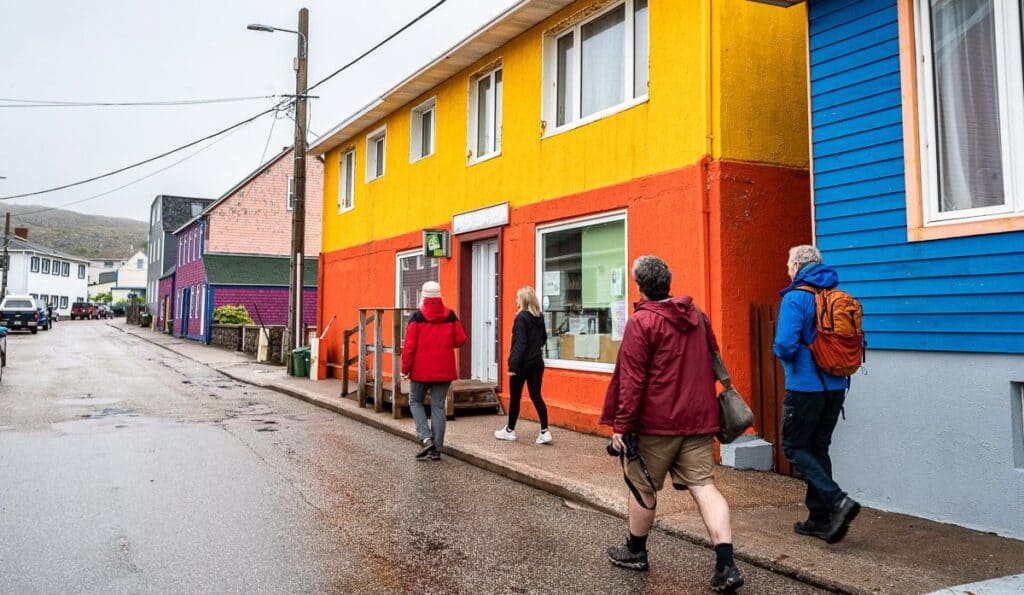

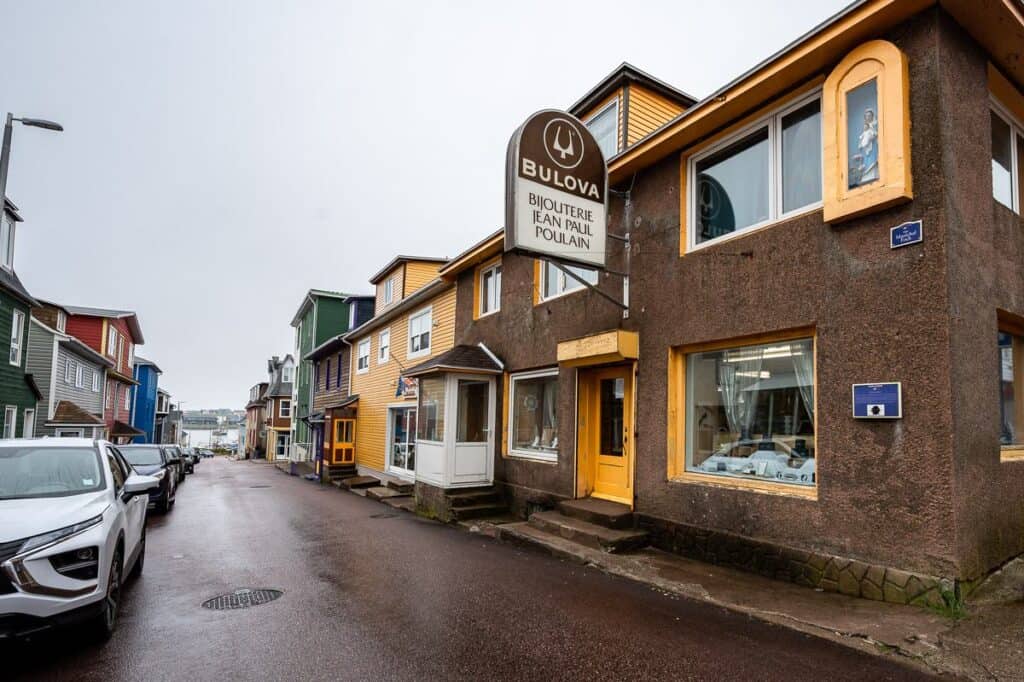

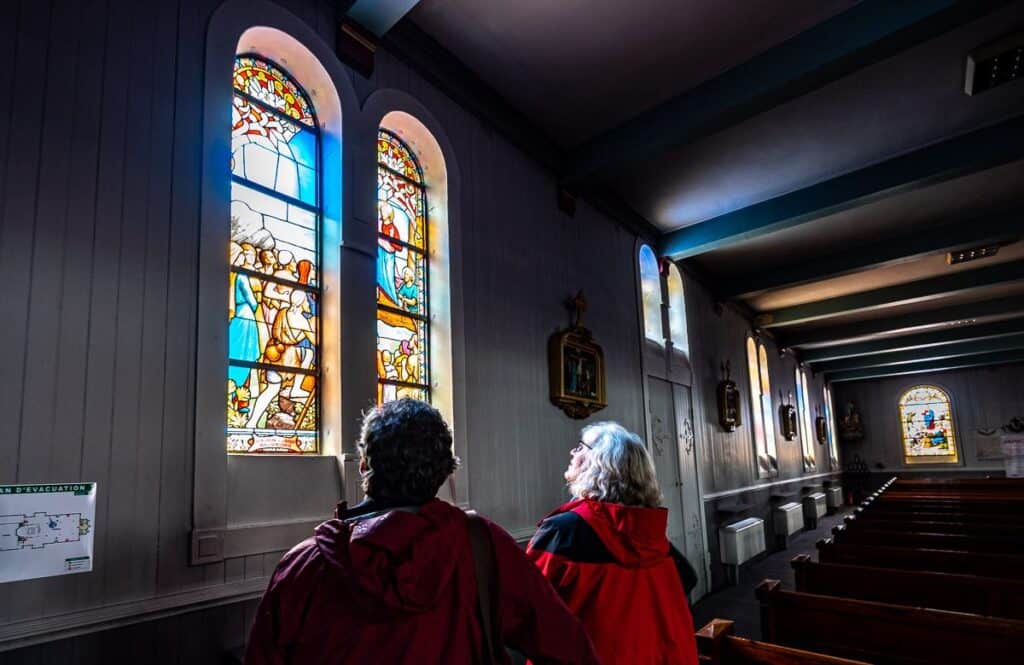

Visit ‘Île aux Marins
‘Île aux Marin, which translates to Sailor’s Island is reached via a short ferry ride from the town of St. Pierre. The island is a beauty on a sunny day. Sign up for a walking tour through the tourism office and learn the history of the island. This was one of my favourite things to do on St. Pierre – partly because we had such a beautiful day to explore the island.
At one point there could be up to 150 schooners in the main St. Pierre harbour. Their presence made it difficult for the fisherman to access the sea – and hence their move here as it was closer to the sea.
Today as you walk the island you can see their houses. Some have stones in front of them for drying the cod. They needed 8 days of consecutive sun to dry the cod – which you can imagine is a hard thing to do in this rainy part of the world. But once dried, it’s good for a year.
Cod liver oil was used to protect the wood of houses. If you had more money, you might use linseed oil and mix it with a pigment to get yellow or red paint. Note all the colourful houses around the island.
After 1960 the ‘Île-aux-Marins residents relocated to St. Pierre. But it’s been revived with locals returning to what are now summer homes and school kids come over for week-long soccer camps.
Plan to have lunch at La Maison Jezequel near the dock. It’s open from 10 AM – 5 PM Tuesday to Sunday in July and August and in every day except Monday and Thursday in June and September. Reservations are recommended.
After lunch take another hour to wander all the trails on the island. There are beautiful beaches and even the relic of a ship washed ashore.
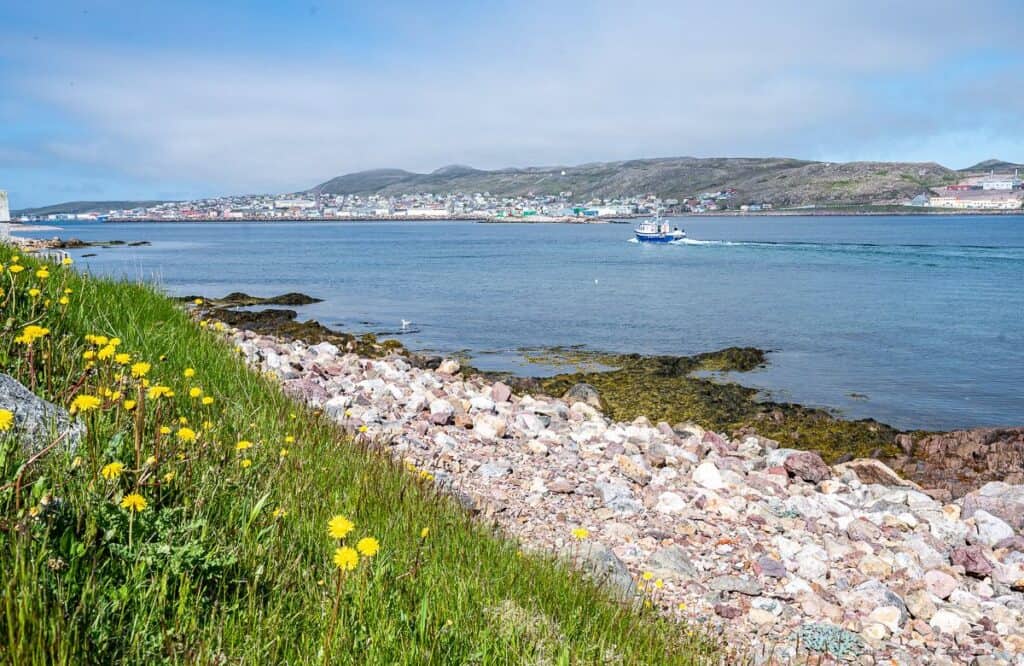



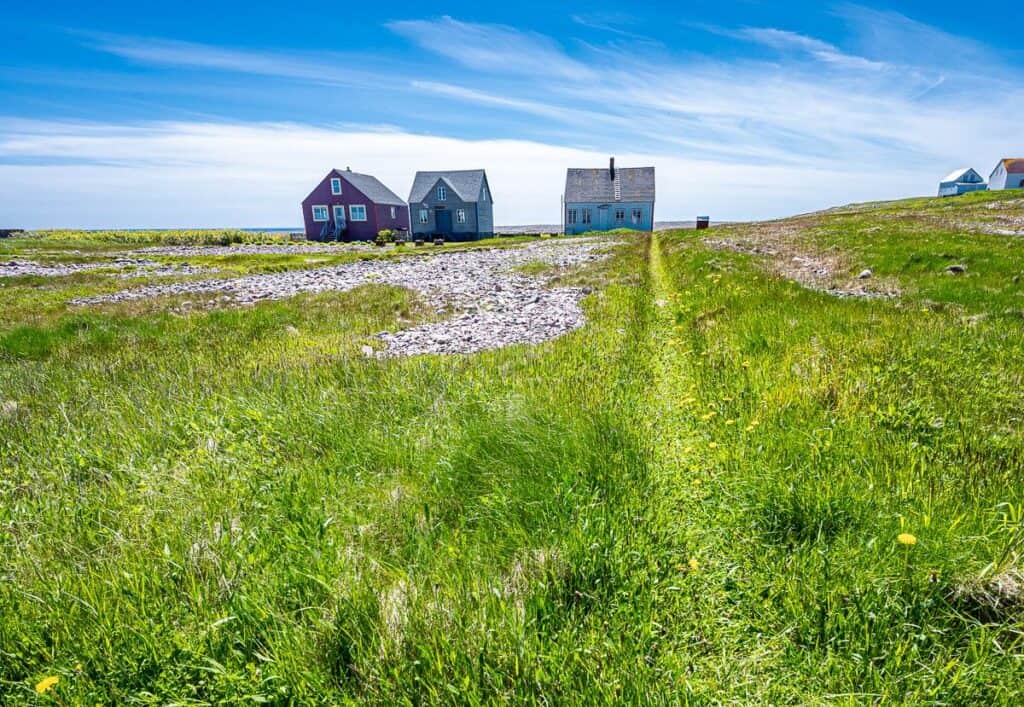

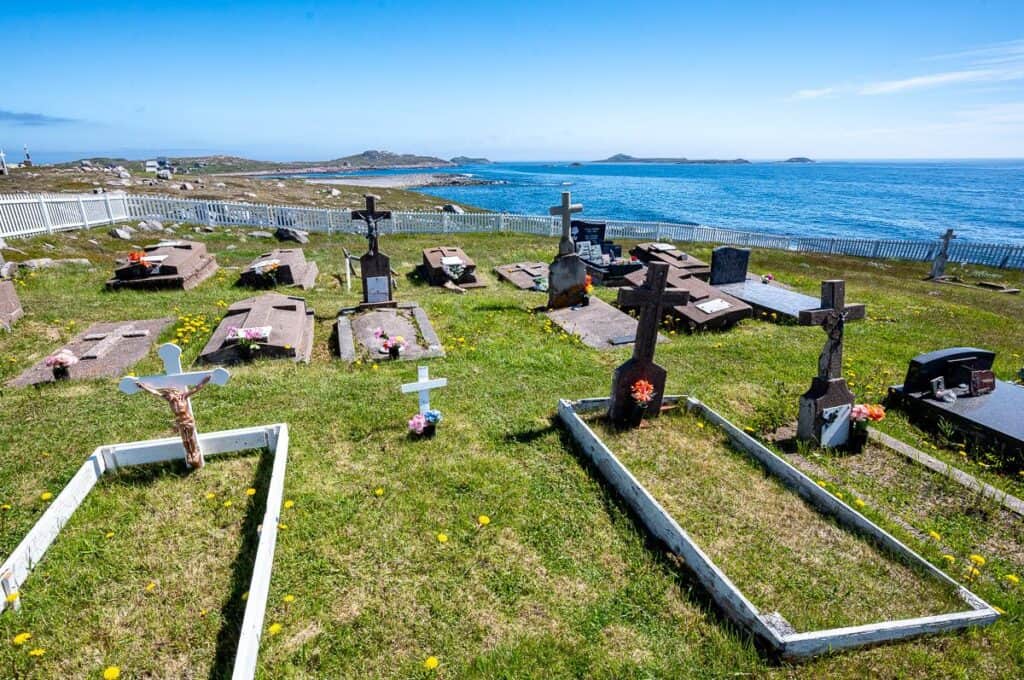

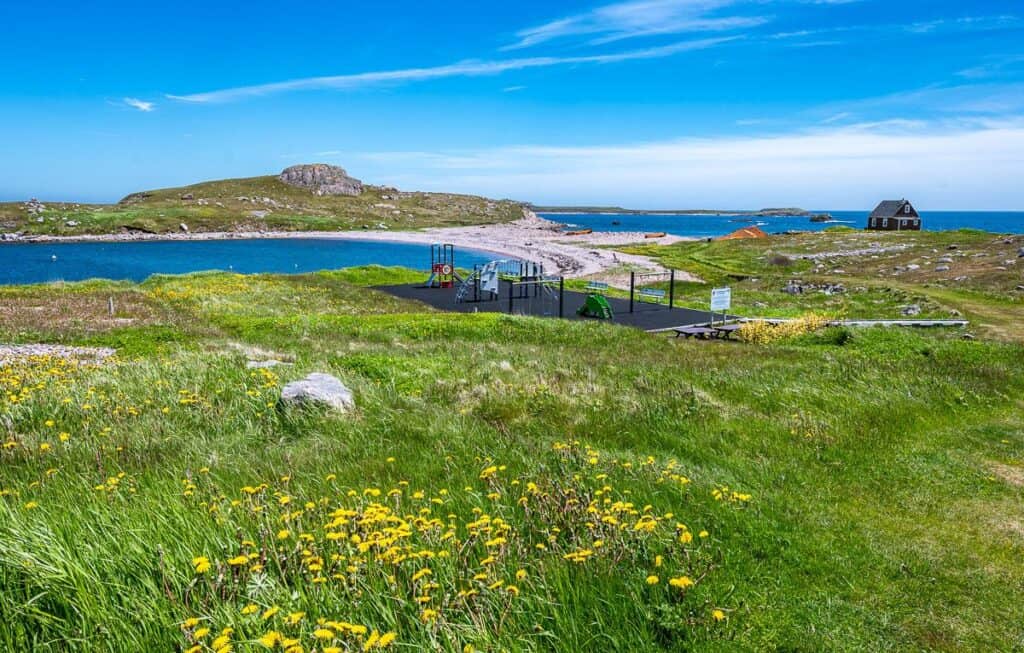



Take a boat tour with Les Zigotos
There is a group of local fishermen known as Les Zigotos on St. Pierre and Miquelon that are dedicated to the preservation of the wooden boat heritage. Along a stretch of road near the Quai de Peche look for colourful sheds facing the water – with equally colourful dory boats in front of them.
One of the sheds houses a museum of sorts. Inside you can read stories, see pieces of equipment and marvel at the distances some of the boats have been rowed. On occasion, there are boat trips offered either around the harbour or over to Grand Colombier Island – home to a migratory bird sanctuary.
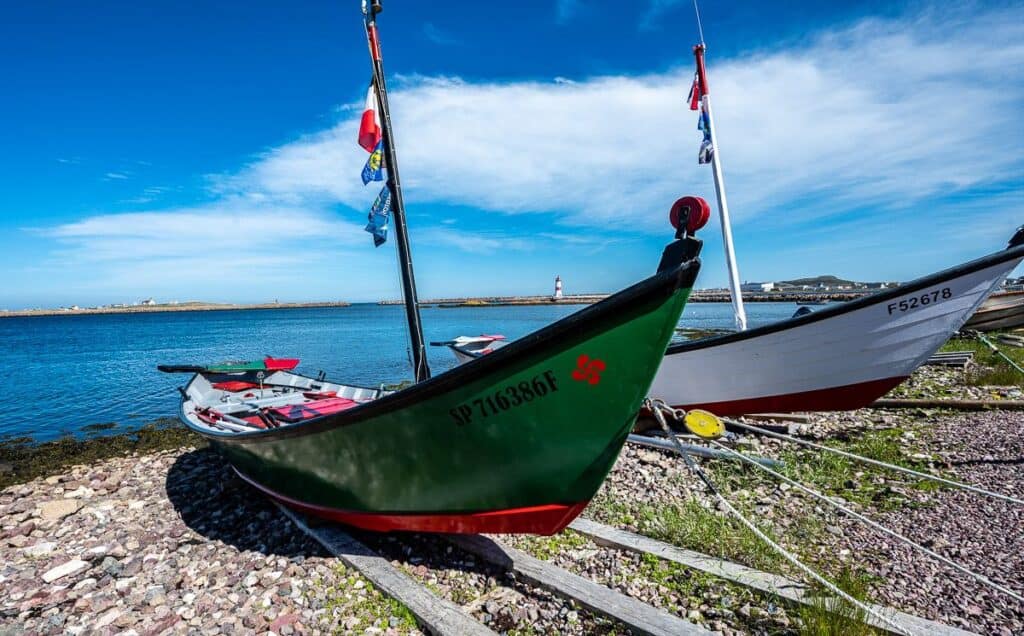

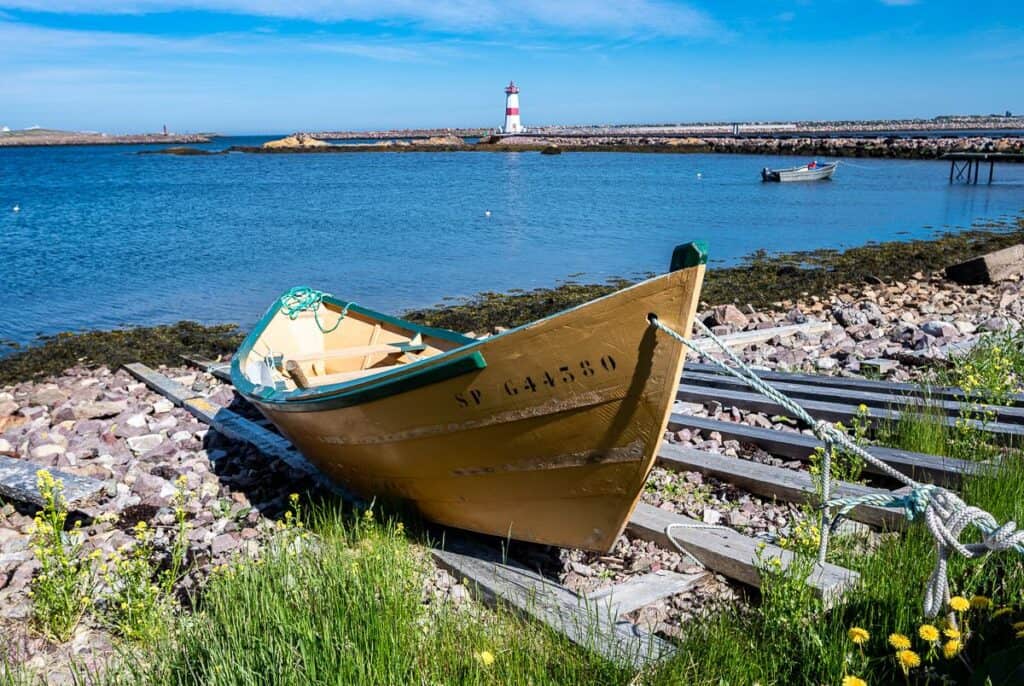

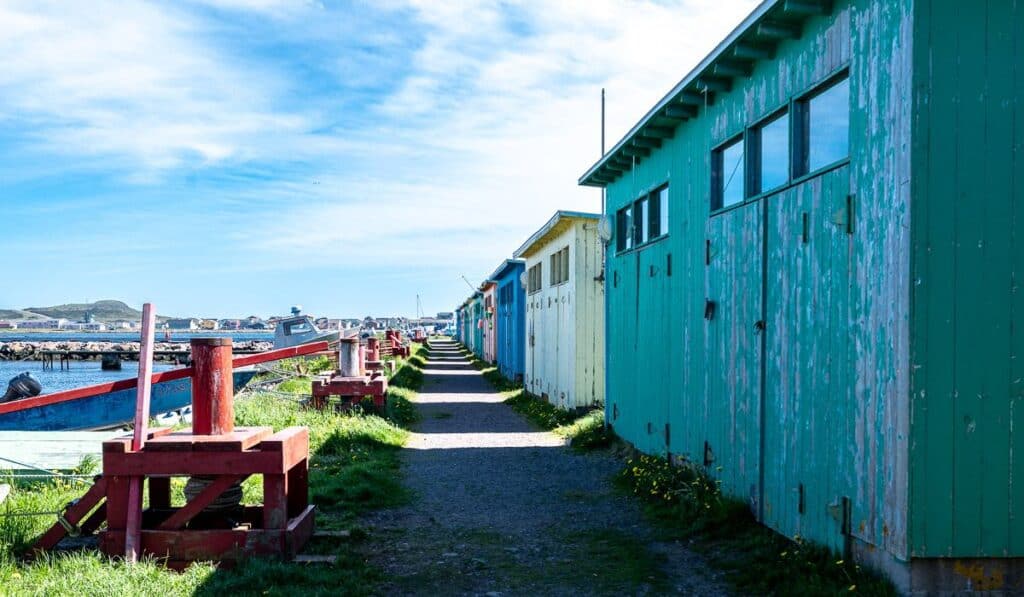

Go for a hike with Escapade Insulaire
We signed up for a hike with Gilles Gloaguen, the owner of Escapade Insulaire. As we didn’t have a lot of time, he suggested a hike that started at Anse a Henry and went up to Trepier – the high point on the island at 207 m. Most of the hike was off trail, but there was nothing tough about it.
Along the way Gilles stopped to pick leaves of the Labrador tea plant which he used for making a tea we enjoyed near the summit. I’m thankful that we caught a beautiful day – and that it was clear enough we could see Newfoundland in the distance. You only need 90 minutes to do the hike which was perfect as we’d had a busy day.
Gilles will pick you up and drive you to any hike you want to do on the island. He also leads tours on Miquelon and in Newfoundland.


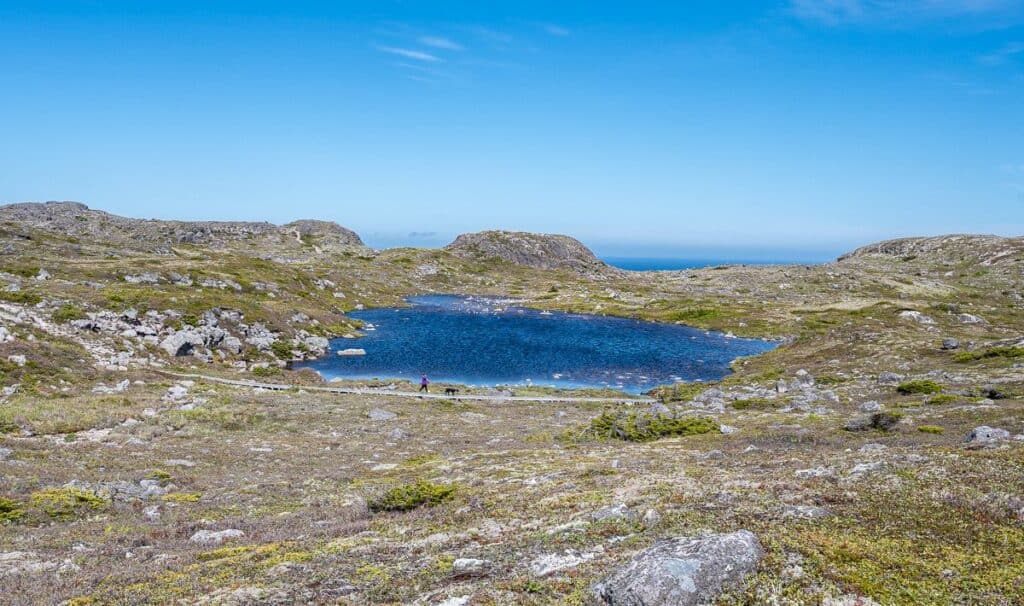

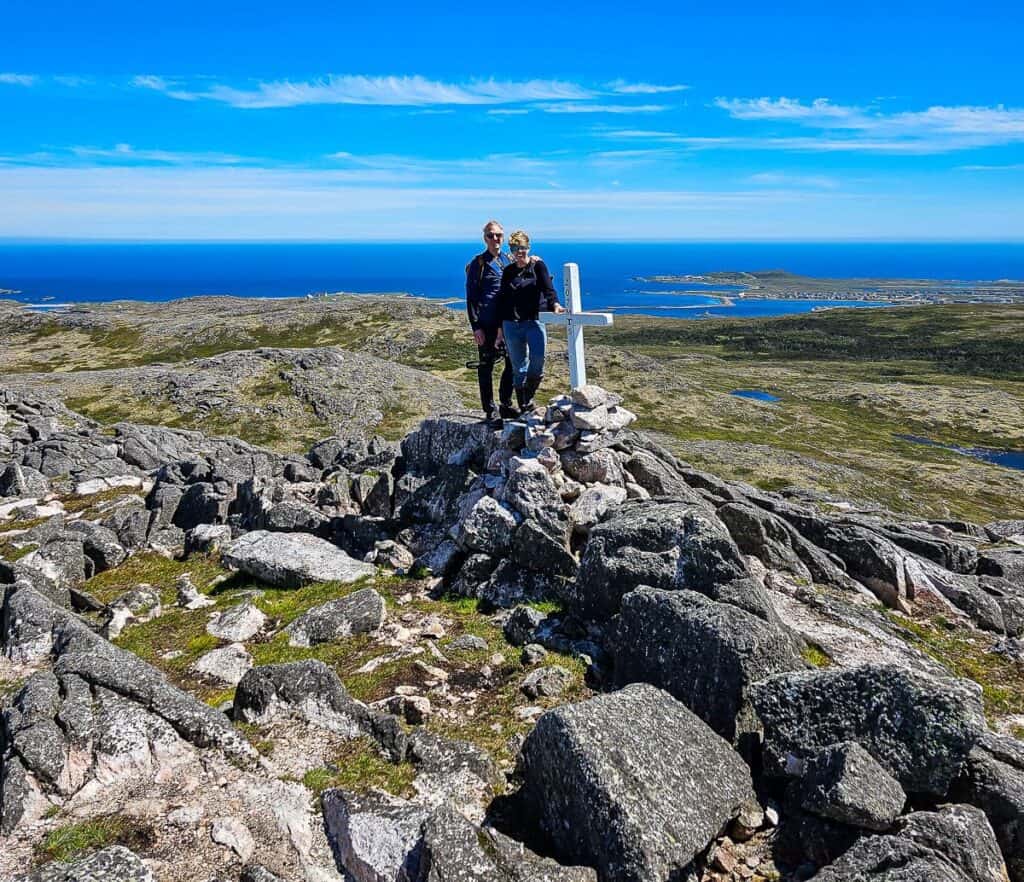

Take a hike with a view of St. Pierre
After dinner at Auberge Quatre Temps John and I made our way over to the Observatoire de l’Anse a Pierre by way of some wet trails. We could just barely make out the colourful homes and businesses below – but on a fine evening what a place this would be to visit.
We also discovered a hiking trail that took off from there and heads off to some ponds. It looks like it would be a beautiful area to explore on foot.
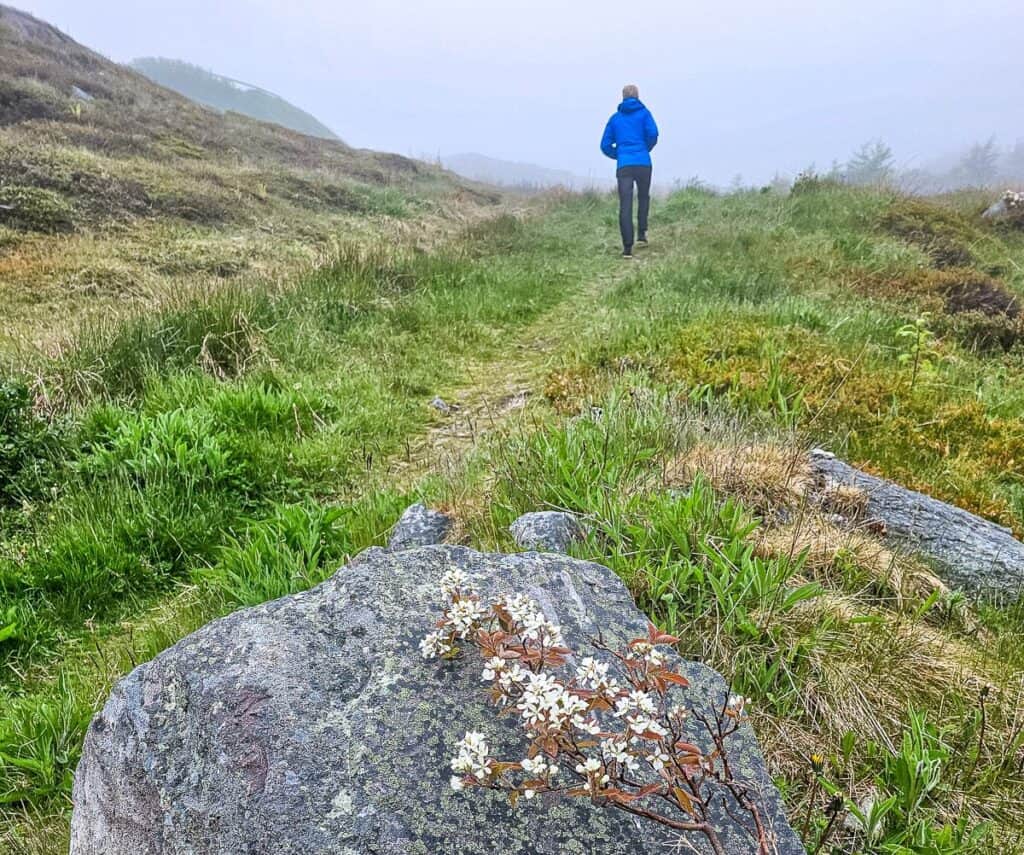

Hike the Diamond Trail
I absolutely loved the Diamond Trail – a recommendation from our guide who took us on the architectural tour.
We took a taxi from our hotel and got dropped off on a dirt road several kilometres away from the actual trailhead for the Diamond Trail. It took only about 30-40 minutes at a good pace to reach the true starting point – with stops to admire the horses near the beginning of the trail along with the rugged coastal scenery.
Once we reached the Pointe du Diamant we hopped on the very new-looking boardwalk. It takes you on an easy loop hike over 3.5 km, passing Savoyard Beach along the way. It’s got benches and picnic table at intervals along the route, so it would make a fine destination for a picnic lunch or dinner.
Views are superb along the coast. It has a much wilder feel to it than the protected waters around St. Pierre.
As an outdoors lover, I personally would put this hike in the top three things to do on St. Pierre.
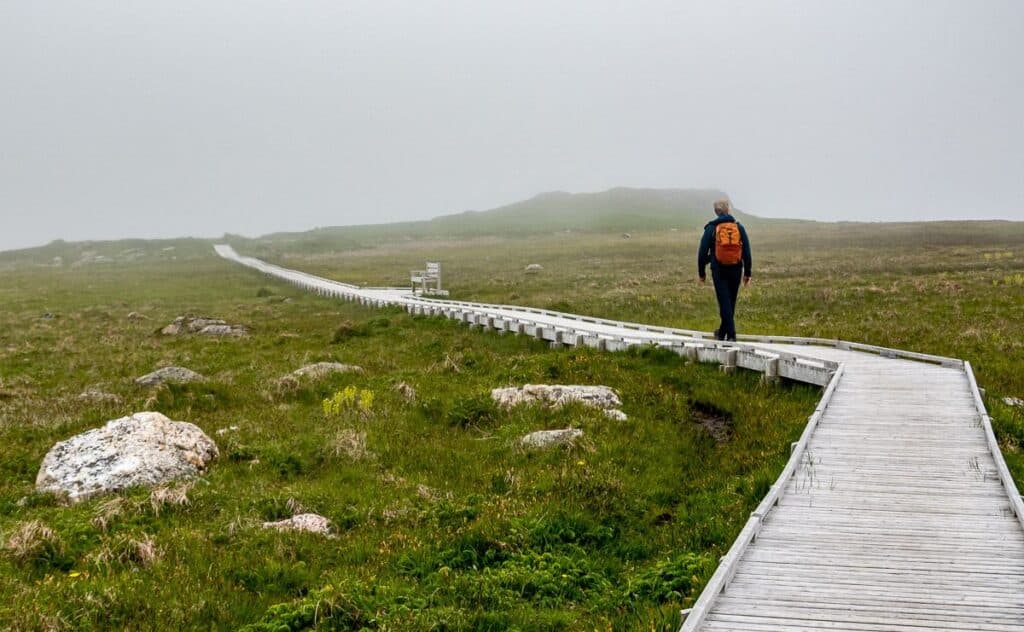

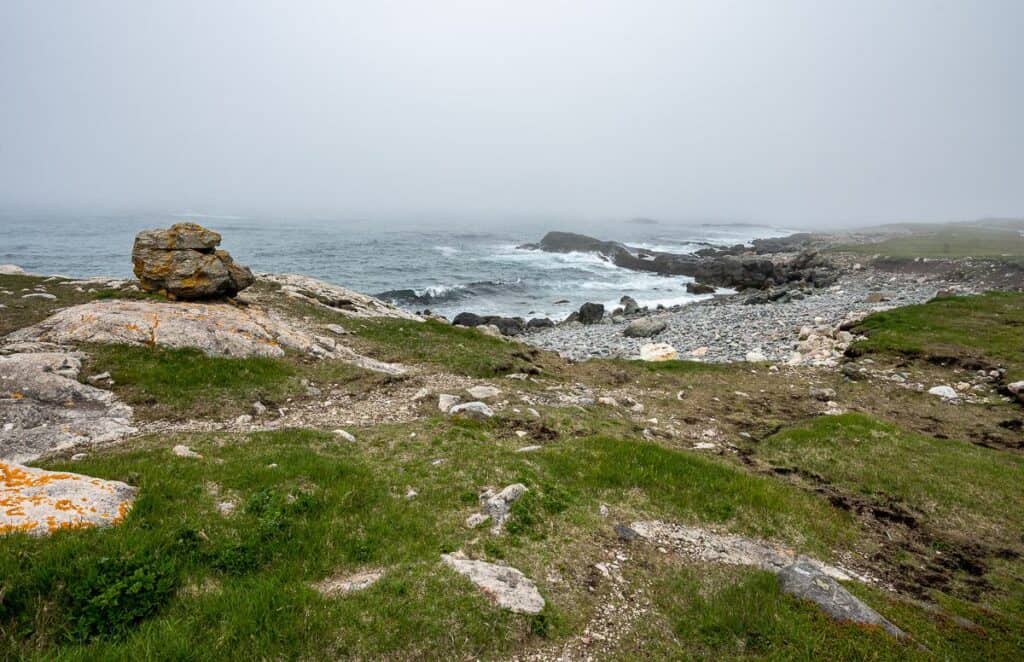

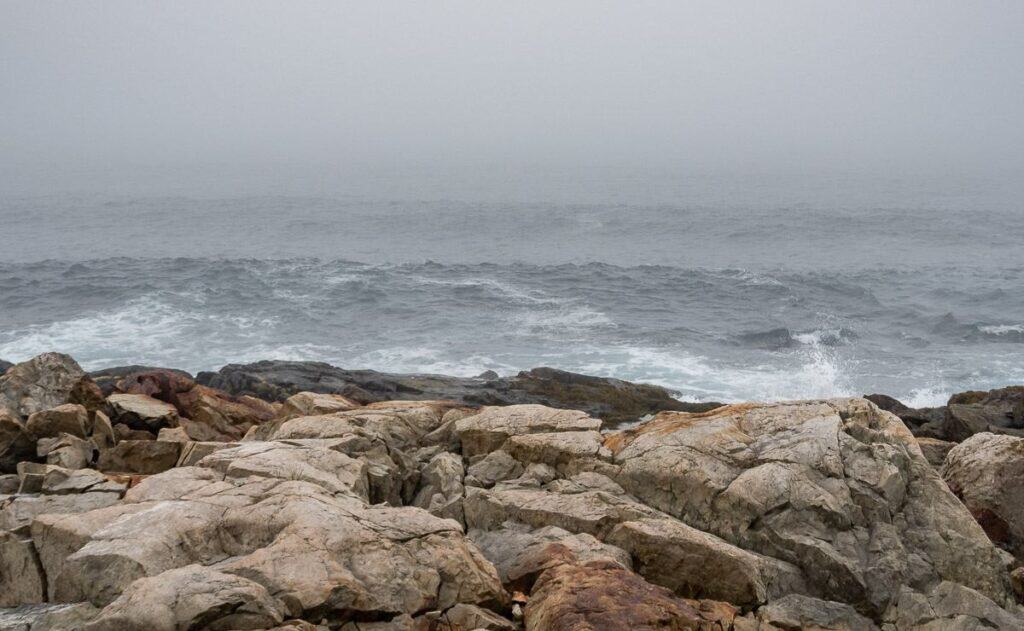

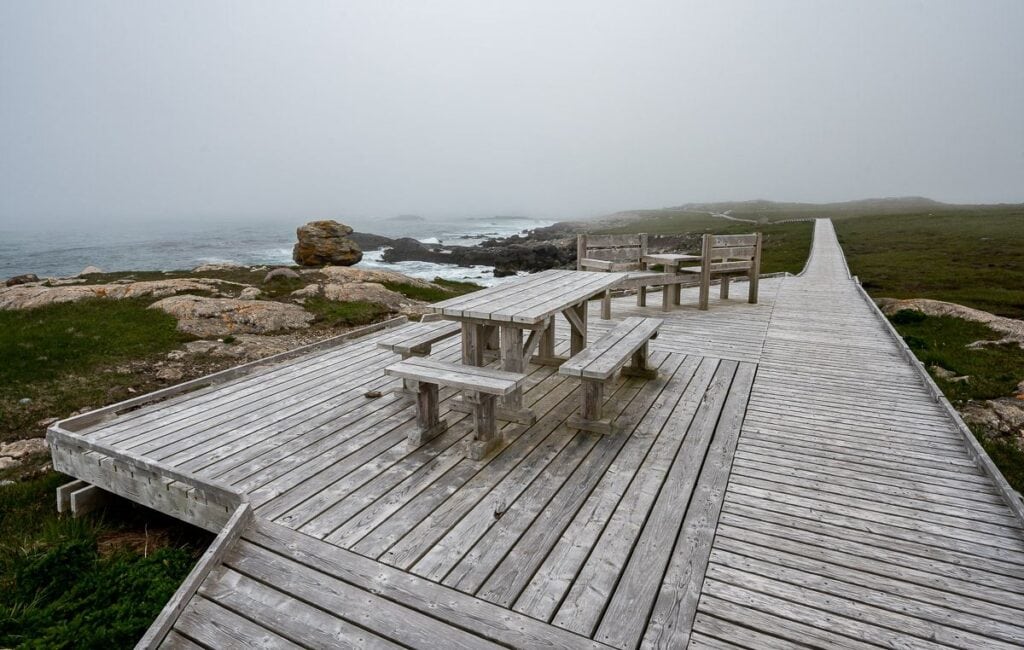

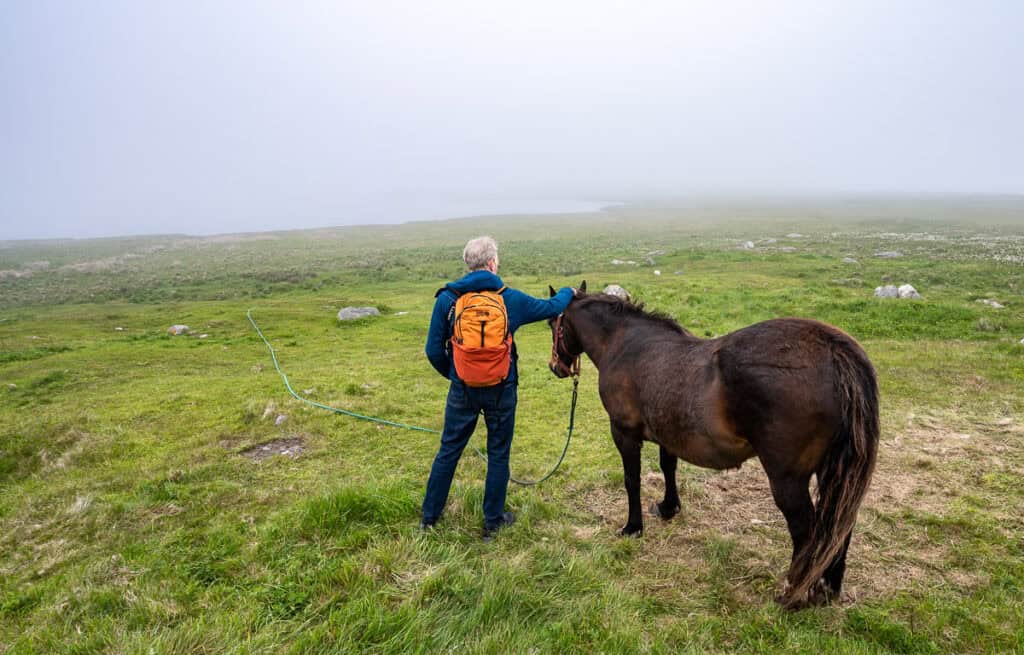

Hire a driver and tour the island of St. Pierre
Take a tour of the island of St. Pierre with Taxi Solomon or rent bikes at X Sport Boutique near the Visitor Information Centre. St. Pierre is hillier than you might expect though there aren’t a lot of roads. At most you’d need a couple of hours in a taxi but a lot more if you’re on a bike.
Don’t miss the Cap aux Basques observation point on Route du Cap du Basques or the view from l’Anse a Pierre. I’d only suggest doing a tour on a clear day or there won’t be much to see.
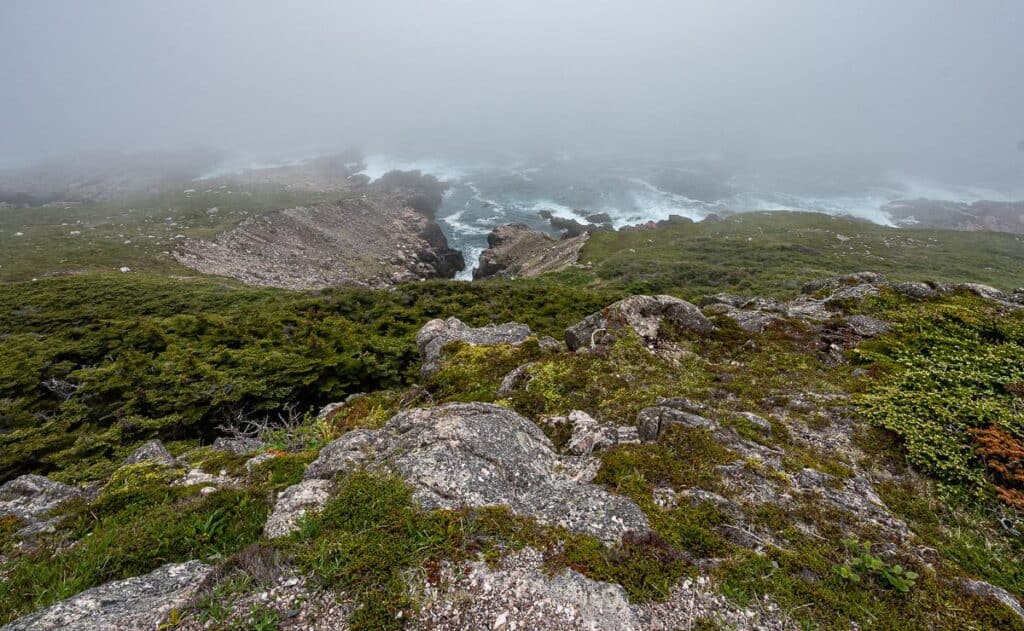

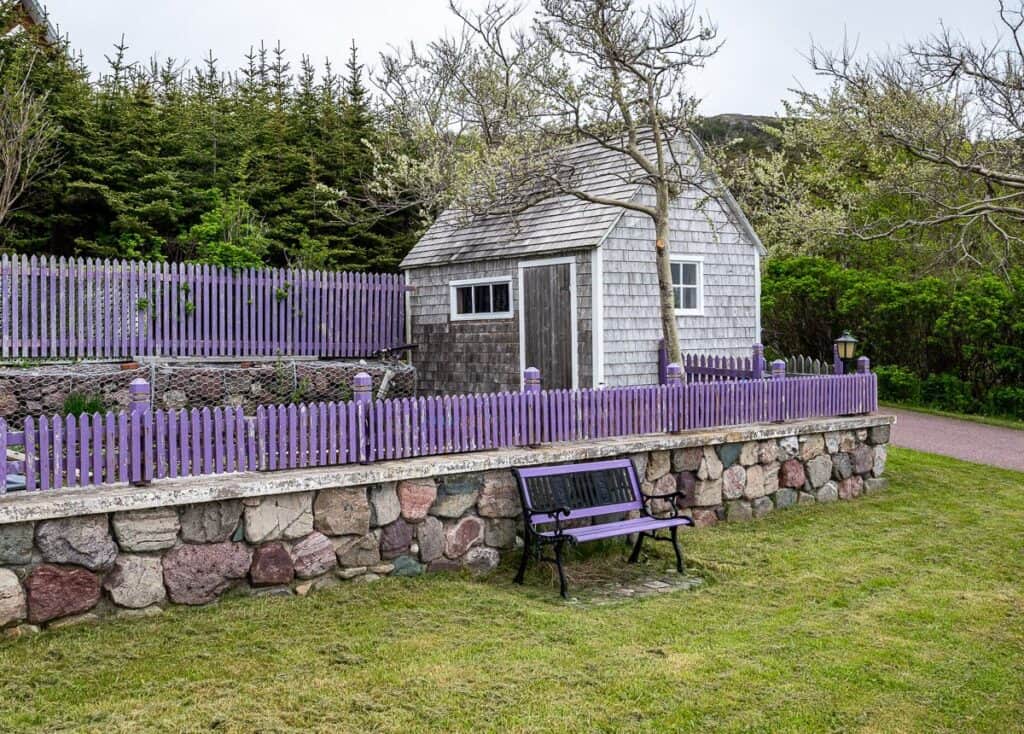

Enjoy delicious French meals
Le Feu de Braise (14 Rue Albert Briand) You might walk by the restaurant several times before clueing in that it’s upstairs above Le Rustique bar. Visit for pizzas (one will do two people) and French cuisine. It’s a great place for lunch.
Auberge Quatre Temps (Impasse des Quatre Temps) is also a family-run inn about 15 minutes by foot from downtown St. Pierre. Chef Pascal and his wife, Marie-Andree from the Reunion Islands are warm and welcoming. Look for Reunion Island touches to the menu like. It’s a cozy dining room, so be sure to reserve.
Les Petits Graviers (2 rue Amiral Muselier) Great ambiance with French inspired food.
Le bar a quai, showcasing both artwork and a vegetarian menu is the newest one in town. The menu changes weekly.
Le Rustique (14 Rue Albert Briand) is the place to go for a drink. You’ll find local music as well as Canadian musicians.
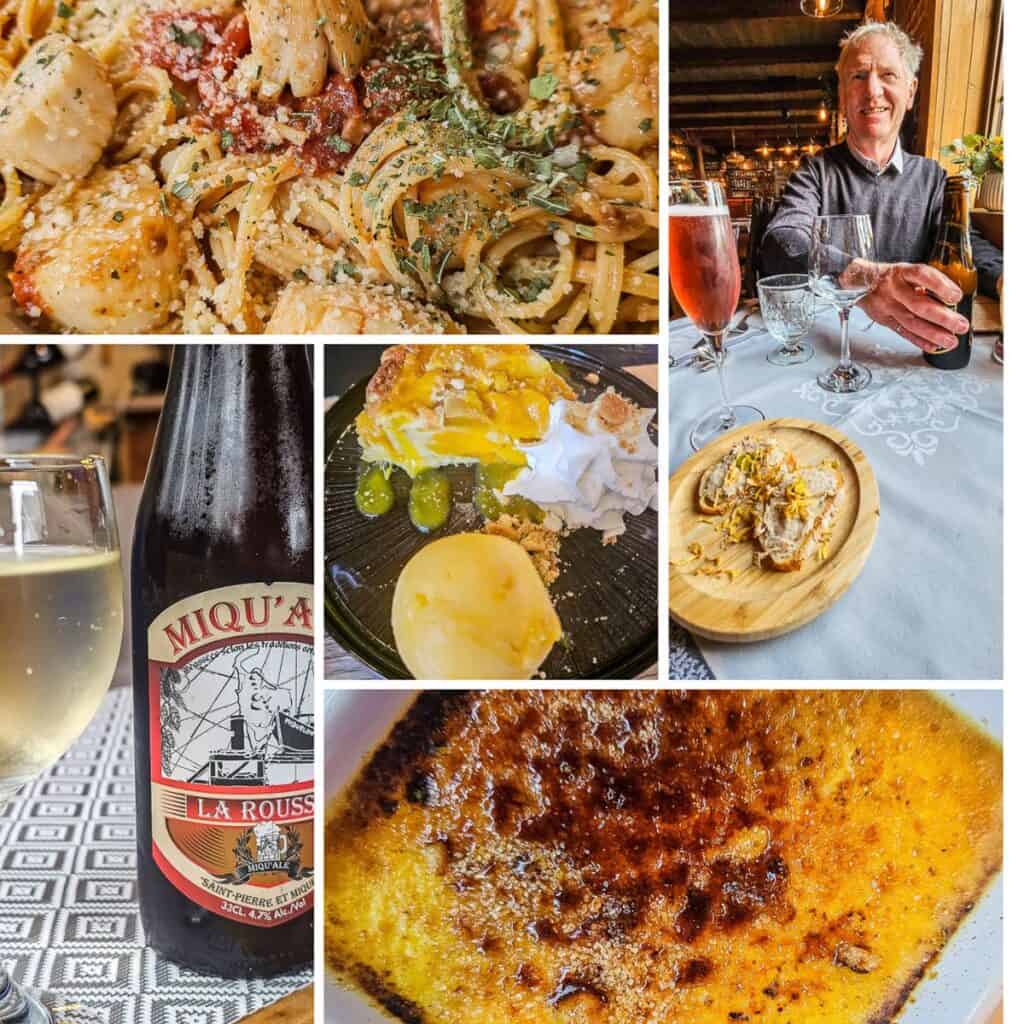

Eat a flaky French pastry
If you want a slice of heaven visit Boulangerie Patisserie des Graves near the Terrasses des Port Hotel. It became our go to spot for great coffee and divine, flaky French pastries.
More suggestion thanks to our local guide is the Roc Cafe Saint-Pierre and the Delights of Josephine at 10 rue de General Leclerc.


Where to stay on St. Pierre
Les Terrasses du Port – We stayed here and while it was very pleasant, and considered luxury by island standards, I think that’s pushing it. It was a lovely room with view out to the harbour along with a spacious bathroom and amenities like coffee and tea in the room.
However, the breakfast they served was very basic with the croissant feeling like it came from Costco and not a French bakery. That was our impetus to enjoy breakfast the rest of the time at the bakery just a 2 – minute walk away.
It’s very convenient to the airport and we could walk into the downtown along the water in about 15 minutes.
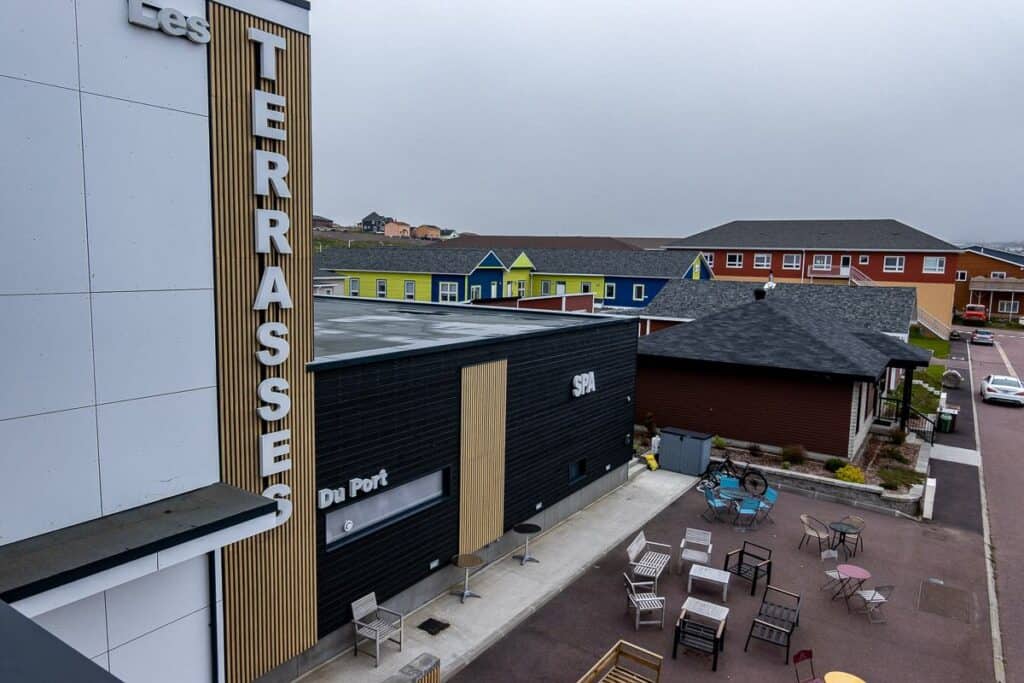

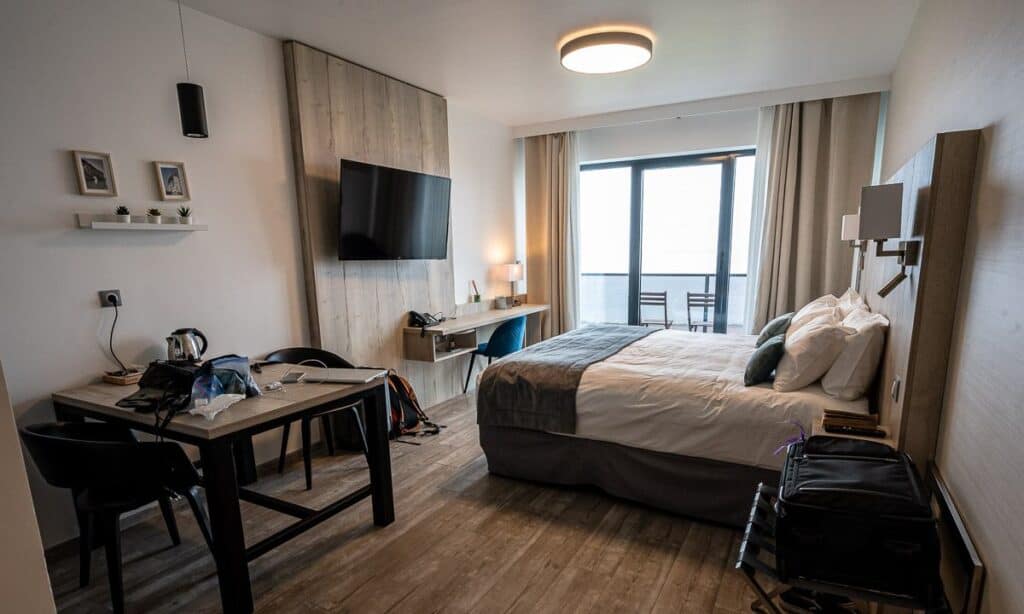

Auberge Quatre Temps – It sits above St. Pierre so there are some great views from this friendly spot – which also houses a wonderful restaurant. You’ll get a warm welcome here.
Auberge Saint-Pierre – This is a 3-star inn where you’ll find quiet and comfort from a three-generation family.
Nuits Saint-Pierre – A small hotel located on the centre of St. Pierre with a pizzeria on the ground floor.
Final thoughts
In summary, I think it’s well worth a short trip to St. Pierre, especially if you’re already in Newfoundland. It’s a treat to start the day with divine French pastries that are half the price of anything in Canada. And you do feel like you’ve traveled to France – albeit a colder and windier France that you might be accustomed to.
More blogs about off the beaten track places
Click on the photo to bookmark to your Pinterest boards.














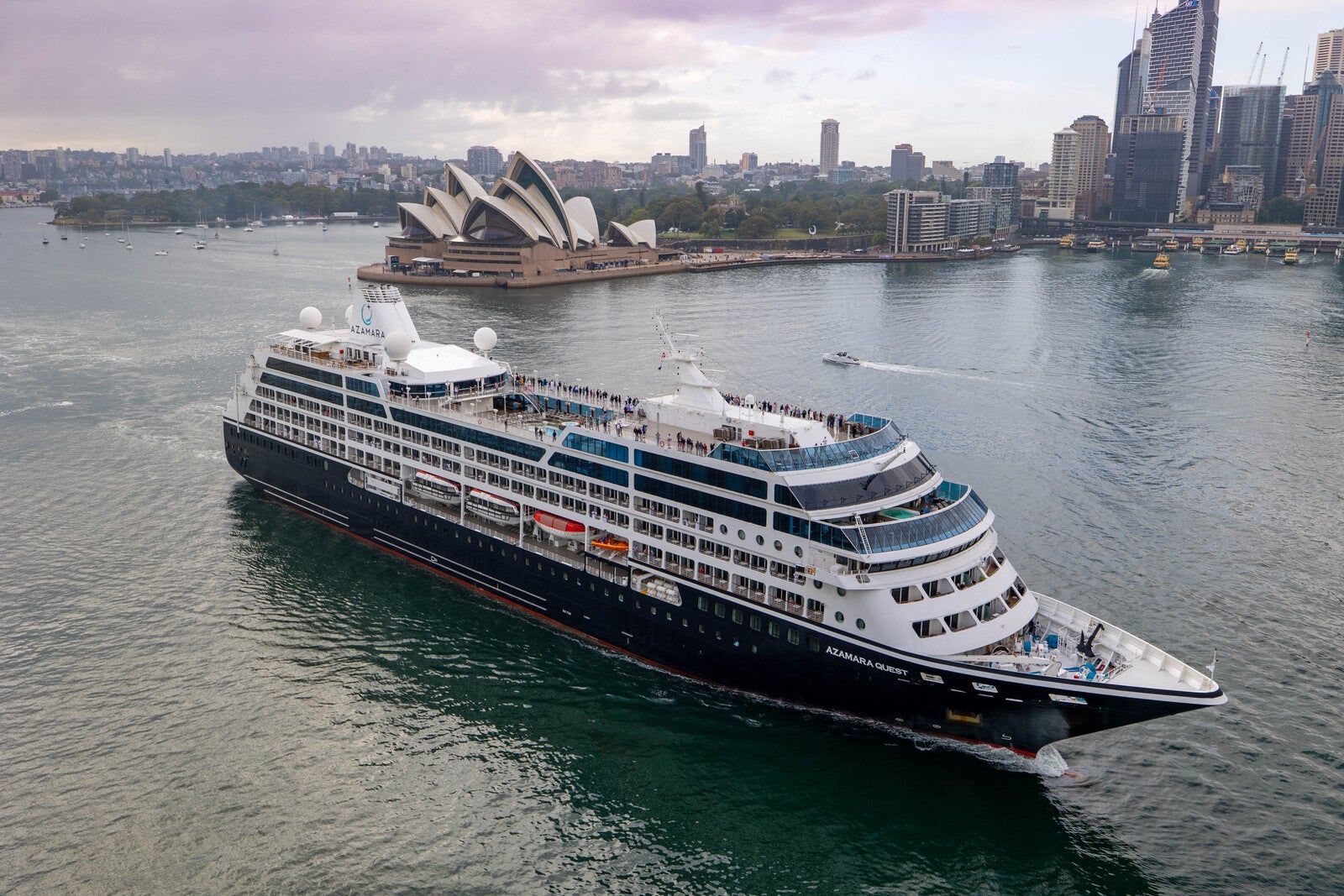








Discussion about this post